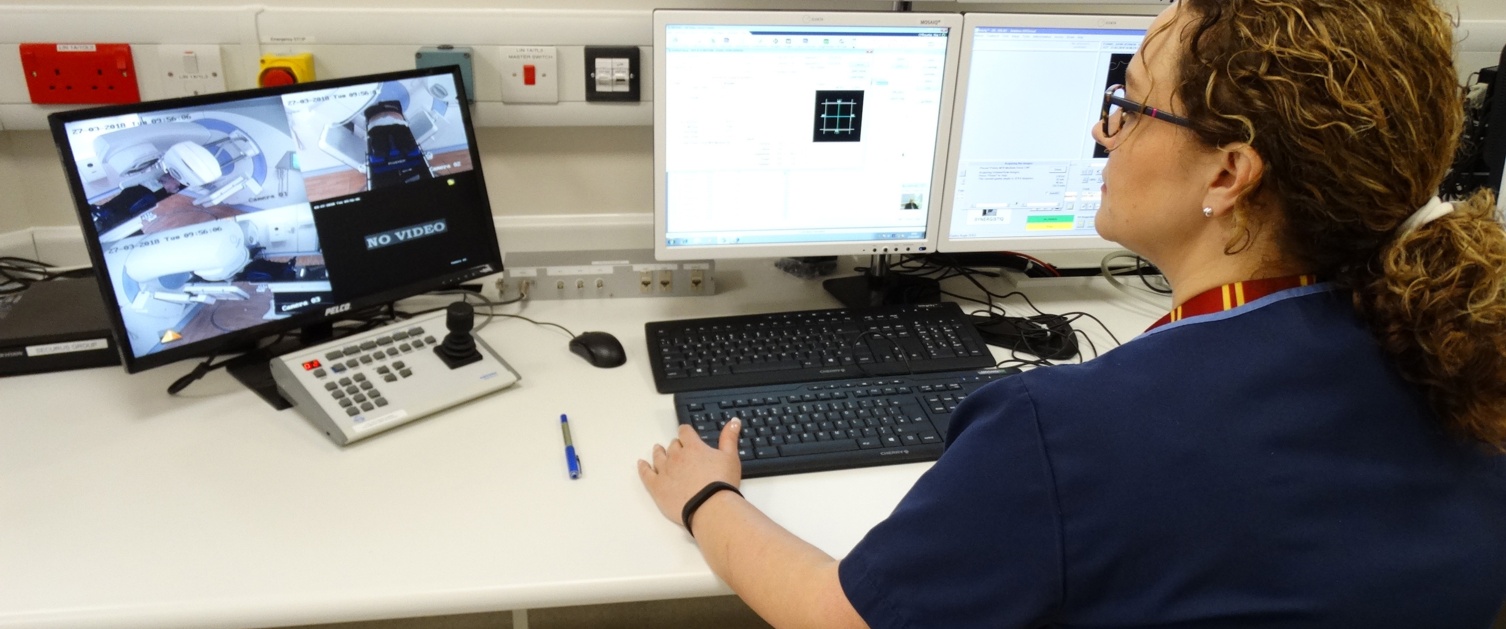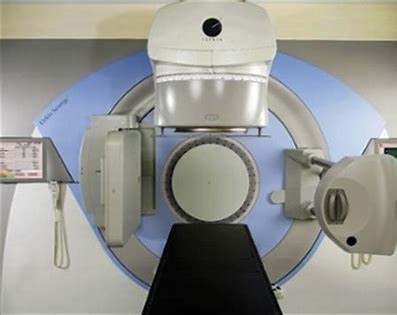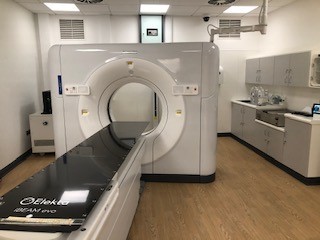Radiotherapy

Updated: 08.02.2024
About radiotherapy
Radiotherapy is a highly-specialised procedure which uses high-energy x-rays to treat tumours which may or may not be cancerous.
Radiotherapy works by damaging cells in the area we are treating, ensuring they do not grow any further. Normal cells are damaged in the process, but have the ability to recover. Treatment is delivered by machines called Linear Accelerators (Linacs) and is a painless process.
Singleton Hospital Radiotherapy Centre comprises of both planning and treatment departments - medical physics. We have the capacity to treat 135 patients per day and in excess of 2,000 patients on an annual basis.
The treatment department includes 5 treatment units listed below, as well as a state of the art, wide bore CT scanner with Sentinel System and 5 moving lasers.
Lin 1 - Elekta Agility Synergy with SGRT facility
Lin 2 - Elekta Agility Synergy Versa HD with SGRT facility
Lin 3 - Elekta Agility Synergy Versa HD with SGRT facility
Lin 4 - Elekta Agility Synergy
Lin 5 - Elekta Agility Synergy Versa HD with SGRT facility (Clinical live date due August 2023)
The staff who perform the scans and deliver the treatment are called radiographers. Both male and female radiographers work at the radiotherapy department as well as student radiographers from Cardiff University.
 A Linear Accelerator machine or Linacs which delivers radiotherapy treatment. Treatment is a painless process.
SBUHB
A Linear Accelerator machine or Linacs which delivers radiotherapy treatment. Treatment is a painless process.
SBUHB
 A CT scanner.
SBUHB
A CT scanner.
SBUHB
About our department
The radiotherapy department is located within the main oncology outpatients unit at the back of the main hospital building.
Up to 50% of cancer patients will undergo radiotherapy as part of their cancer treatment either with or without chemotherapy.
Rydym yn croesawu gohebiaeth a galwadau ffôn yn y Gymraeg neu'r Saesneg. Atebir gohebiaeth Gymraeg yn y Gymraeg, ac ni fydd hyn yn arwain at oedi. Mae’r dudalen hon ar gael yn Gymraeg drwy bwyso’r botwm ar y dde ar frig y dudalen.
We welcome correspondence and telephone calls in Welsh or English. Welsh language correspondence will be replied to in Welsh, and this will not lead to a delay. This page is available in Welsh by clicking ‘Cymraeg’ at the top right of this page.